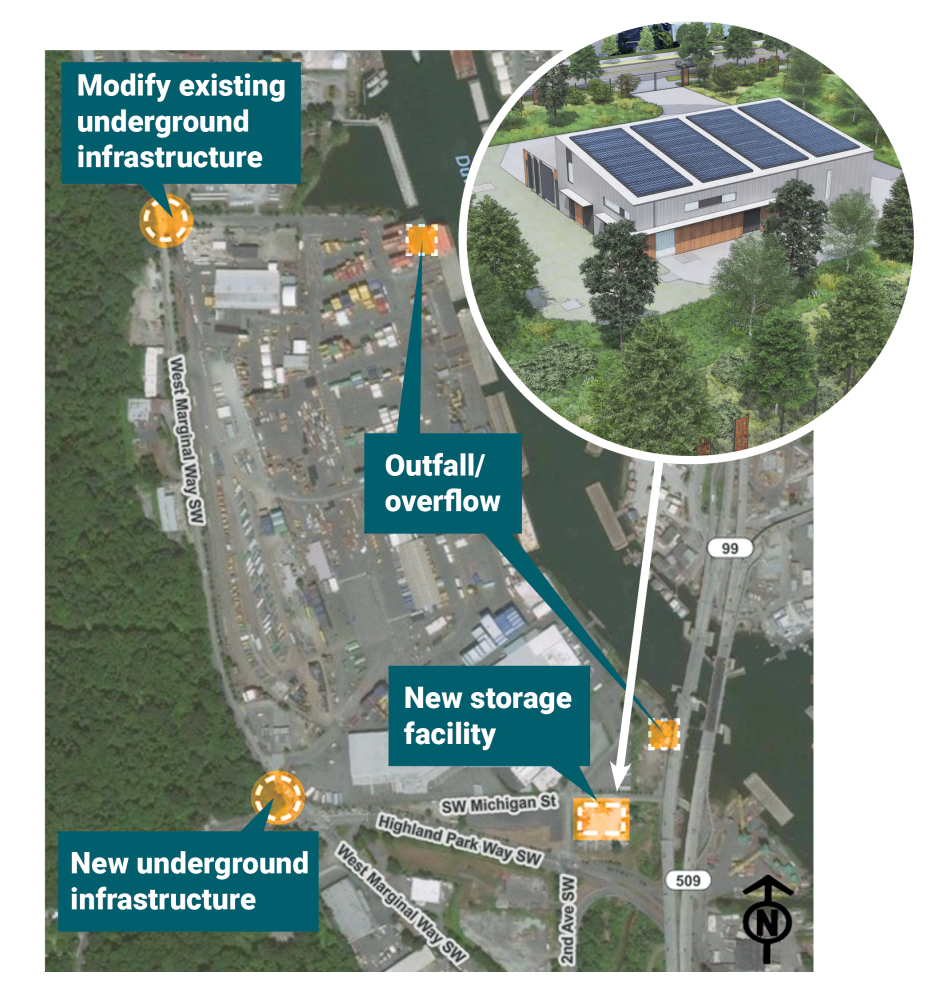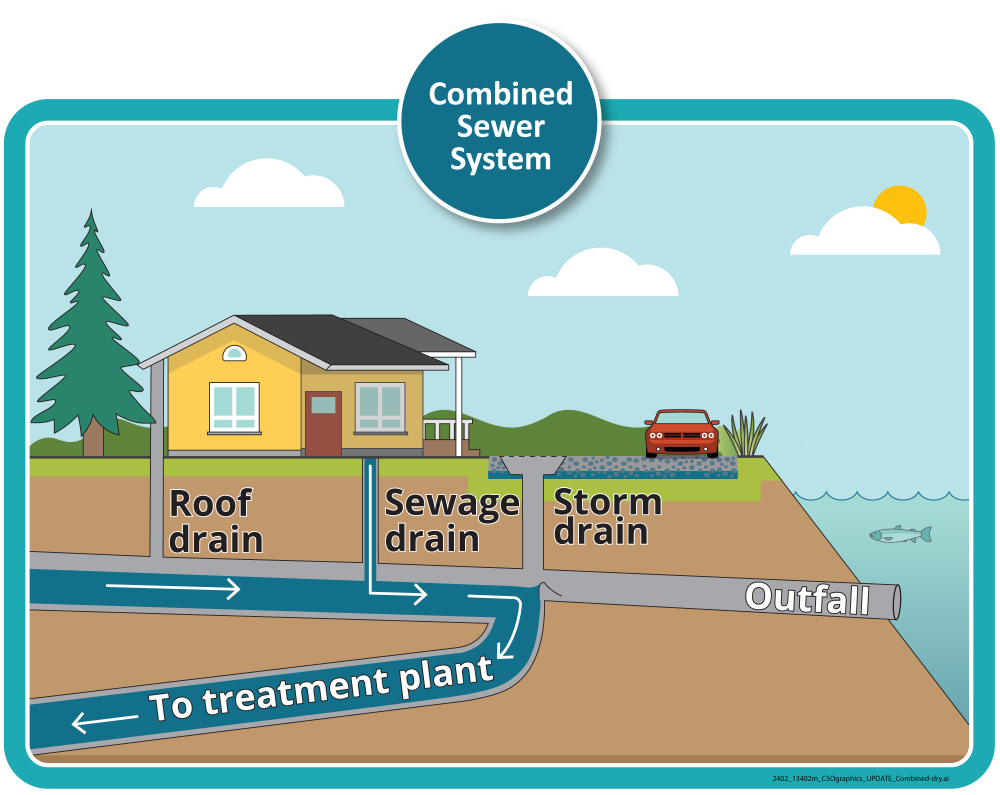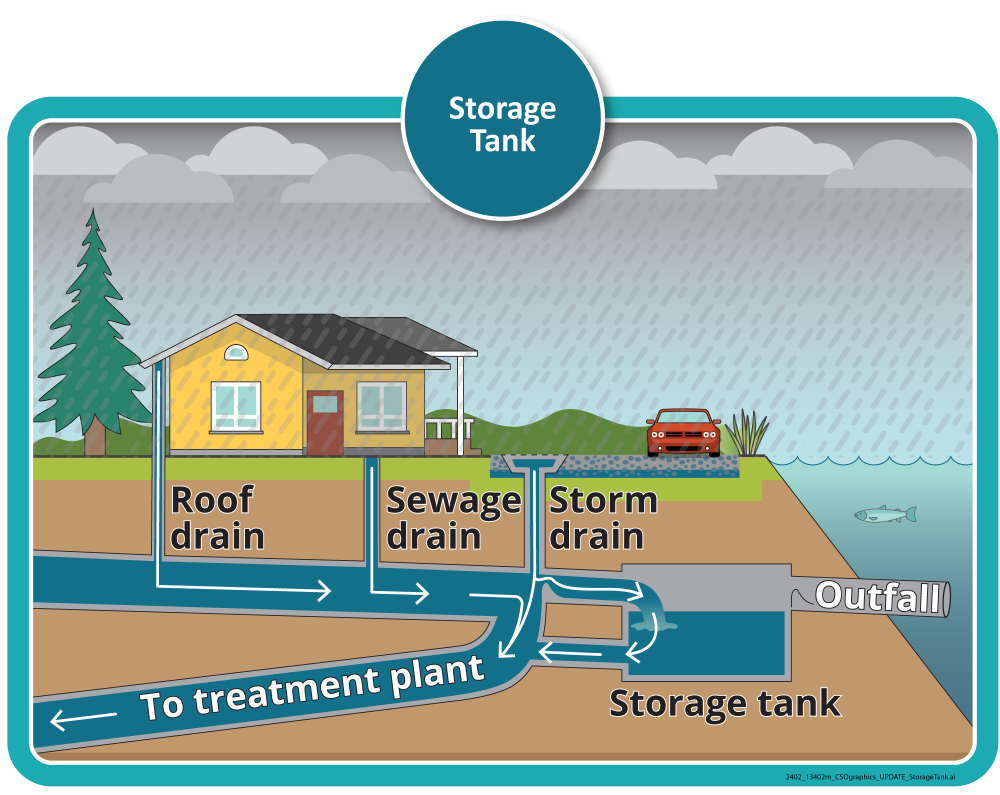West Duwamish Wet Weather Storage project
West Duwamish Wet Weather Storage project
Design progresses for a new facility near South Park that will keep pollution out of the Duwamish River. Use the navigation panel at the top of the page to learn more about King County's plans for community outreach, public art, and workforce development, including our upcoming career fair!
Project overview
King County is building a 1.25-million-gallon underground storage tank near the intersection of Southwest Michigan Street and Second Avenue Southwest to hold stormwater and wastewater during large storms. The water in the storage tank will then flow to the West Point Treatment Plant for treatment before it is safely released into Puget Sound. The County will also build supporting infrastructure underneath West Marginal Way Southwest. This project will reduce Combined Sewer Overflows (CSOs) into the Duwamish River. To learn more visit the project wbepage: kingcounty.gov/westduwamish-cso.
King County will build a storage facility near the First Avenue Bridge to reduce pollution in the Duwamish River.
Land acknowledgement
No story about the dxʷdəw - the Duwamish - river would be complete without acknowledging that the land on which we work, live, and play is the traditional territory of the Coast Salish people whose descendants formed the Duwamish (dxʷdəwʔabš), Suquamish (dxʷəq̓ʷabš), Muckleshoot (bəqəlšuł), Tulalip (dxʷlilap), Snoqualmie (sdukʷalbixʷ), and Puyallup (spuyaləpabš) tribes.
Why do we need a new storage tank?
At one time, the Duwamish River flowed across lush tidal marshes and mudflats to meet Elliott Bay. It was an ideal habitat for fish, birds, and wildlife and was home to the Coast Salish Tribes.
As European settlers transformed the Duwamish River to support agriculture and industry, engineers designed sewers to support the growing population. These pipes carried sewage and stormwaterstraight to the closest body of water. It made sense at the time when planners thought that diluted pollution would not harm the water bodies. Now we direct flows to treatment plants to clean this water before sending it to the water bodies. We built large pipes, called “combined sewers,” to bring stormwater and sewage to a wastewater treatment plant.
Still, when our combined system becomes overwhelmed, we remember this history. When heavy rains fill the combined sewers, relief points or “outfall pipes” send the extra sewage and stormwater out into the rivers, lakes, or Puget Sound. These events are Combined Sewer Overflows (CSOs), and they add pollutants to nearby water bodies and affect their quality and uses.
King County and Seattle have been working to control CSOs since the 1960s and are committed to reducing CSOs per state and federal laws. A controlled outfall overflows no more than one time each year on a long-term average. Today, we have successfully reduced CSO discharge volumes by nearly 70 percent, but there is still work to be done to control the remaining outfalls.
What will the storage tank do?
King County is building this storage tank to hold stormwater and wastewater that currently overflows into the Duwamish River during large storms. After large storms end, the stored water in the tank will flow to the West Point Treatment Plant for treatment before it is released into the Puget Sound. King County will build the Storage near the intersection of Southwest Michigan Street and Second Avenue Southwest in South Park. This facility will control two of 38 King County CSO outfalls. Click here to learn more about the work, King County and the City of Seattle are leading to control CSO outfalls.
A combined sewer system carries both wastewater and stormwater to treatment. Outfall pipes help prevent backups during large storms but contribute pollutants to surrounding water bodies when overflows happen.
The storage facility will prevent overflows by holding stormwater and wastewater during large storms until it can flow to a treatment plant.


